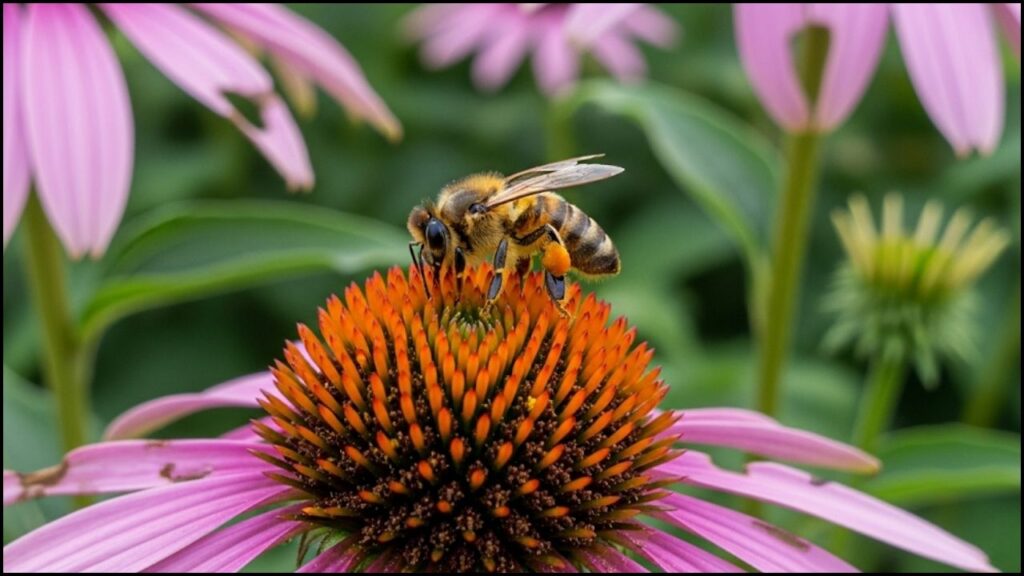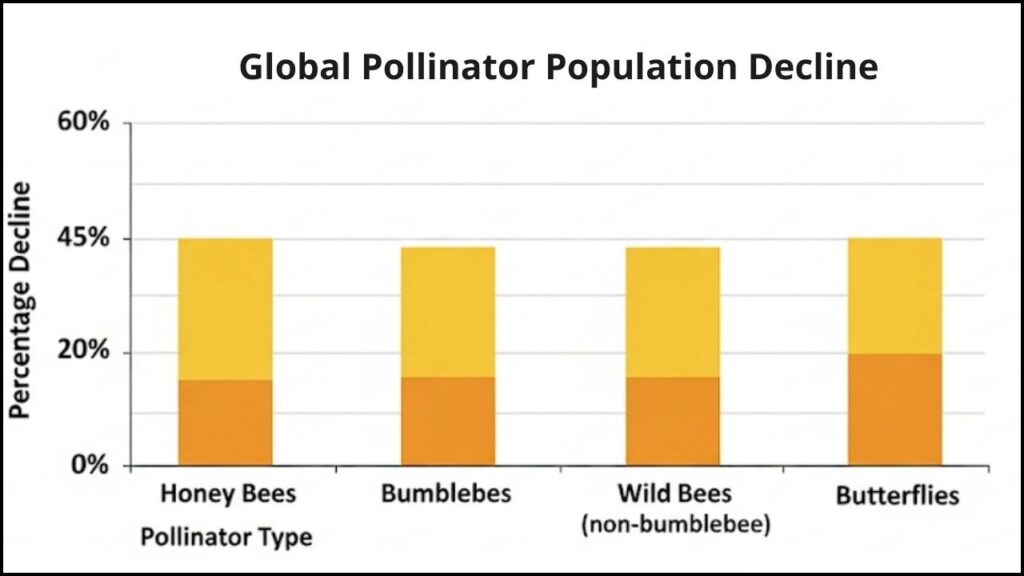
For many, a garden without buzzing bees or fluttering butterflies is not just a sign of a bad year but a reflection of a broader, more troubling trend. The absence of these crucial insects is a symptom of significant environmental pressures, including habitat loss, pesticide use, and climate change. Understanding why there are no bees or butterflies in your garden requires an examination of these complex factors, which are affecting pollinator populations on a global scale.
The Impact of Habitat Loss and Fragmentation
A primary driver of pollinator decline is the widespread loss of suitable habitats. As urban and suburban areas expand, natural landscapes are replaced with manicured lawns and concrete. This process, known as habitat fragmentation, isolates remaining patches of suitable land, making it difficult for pollinators to find food, shelter, and nesting sites.
“Pollinators need a continuous chain of resources, what we call a ‘pollinator pathway,'” said Dr. Sarah Wilson, a senior entomologist at the U.S. Geological Survey. “When that chain is broken by development, it creates what are essentially food deserts for bees and butterflies.”
According to a 2022 report from the United Nations Environment Programme (UNEP), nearly 40% of invertebrate pollinator species, including bees and butterflies, face the threat of extinction due to these environmental pressures. The report highlights that urban environments, while sometimes offering small pockets of floral resources, often lack the diverse native plants necessary to support a healthy pollinator population year-round.
The Pervasive Threat of Pesticide Use
The use of pesticides, particularly insecticides, is another major factor contributing to the absence of pollinators. While intended to target pests, many common agricultural and residential chemicals, such as neonicotinoids, have been shown to be highly toxic to bees and butterflies. These systemic pesticides are absorbed by plants and can contaminate pollen and nectar, which are then consumed by pollinators.
Research published in the journal Science found that even sub-lethal doses of neonicotinoids can impair a bee’s ability to forage, navigate, and reproduce. “It’s not just about direct kills,” explained Dr. James Chen, a professor of ecology at the University of California, Berkeley. “These chemicals can disrupt a pollinator’s nervous system, causing disorientation and making it impossible for them to return to their hive or nest.”
Home gardeners, often unknowingly, contribute to this problem by using broad-spectrum insecticides. These products do not distinguish between harmful pests and beneficial insects. A growing movement advocates for integrated pest management (IPM) strategies, which prioritize non-chemical methods and targeted, less harmful pesticides only when absolutely necessary.

Climate Change and Shifting Seasons
Climate change is altering the delicate synchrony between flowering plants and the pollinators that depend on them. A study from the National Center for Atmospheric Research found that warmer winters and earlier springs can cause plants to bloom before pollinators have emerged from hibernation. This “phenological mismatch” can leave pollinators with a critical shortage of food during a crucial period.
“Imagine a butterfly emerging from its chrysalis only to find the flowers it needs for nectar are already gone,” said Dr. Helen Miller, a climatologist at the University of Colorado. “That’s exactly what is happening in many regions. The timing is off, and it’s a direct result of changing weather patterns.”
Furthermore, extreme weather events like prolonged droughts or intense rainfall can destroy floral resources and disrupt pollinator life cycles. The U.S. Department of Agriculture (USDA) has issued multiple reports on how changing climate zones are forcing some pollinator species to migrate to new areas, often leading to a further reduction in their numbers due to a lack of suitable habitat along their migration routes.
How to Create a Pollinator-Friendly Garden
For homeowners concerned about the lack of pollinators in their garden, there are several actionable steps that can make a tangible difference. Experts at the Xerces Society for Invertebrate Conservation recommend a focus on native plants, which have evolved alongside local pollinator species and provide the most effective food sources.
- Plant a Diverse Range of Flowers: By selecting plants with different bloom times—from early spring to late fall—you can ensure a continuous supply of nectar and pollen.
- Avoid Pesticides: Opt for organic gardening practices and mechanical pest control. If pesticides are essential, choose targeted, non-toxic options and apply them responsibly.
- Provide Water Sources: A shallow dish of water with a few stones can provide a safe place for bees and butterflies to drink without the risk of drowning.
- Create Nesting Sites: Leave some areas of your garden “messy.” Patches of bare soil, hollow stems, and leaf litter provide essential nesting grounds for native bees and overwintering butterflies.
“It’s about re-wilding a small part of your landscape,” said Dr. Wilson. “Even a small patch of native milkweed or coneflowers can become a vital refueling stop for a migrating monarch or a local bumblebee.”
The Broader Ecological Significance
The decline of pollinators extends far beyond the aesthetics of a garden. Pollination is a fundamental ecological process that is vital for the reproduction of over 85% of the world’s flowering plants and is essential for the production of over a third of the world’s food crops. From almonds and apples to coffee and chocolate, our agricultural system relies heavily on the work of bees, butterflies, and other insects.
The efforts of individual gardeners, while localized, collectively contribute to a larger network of habitats that can help mitigate the pressures facing these critical species. The ongoing scientific research and conservation efforts underscore the urgency of addressing the complex factors that are leaving so many gardens without their most dynamic and essential residents.
A Guide to Six Low-Light Edible Herbs for Urban and Indoor Gardeners
